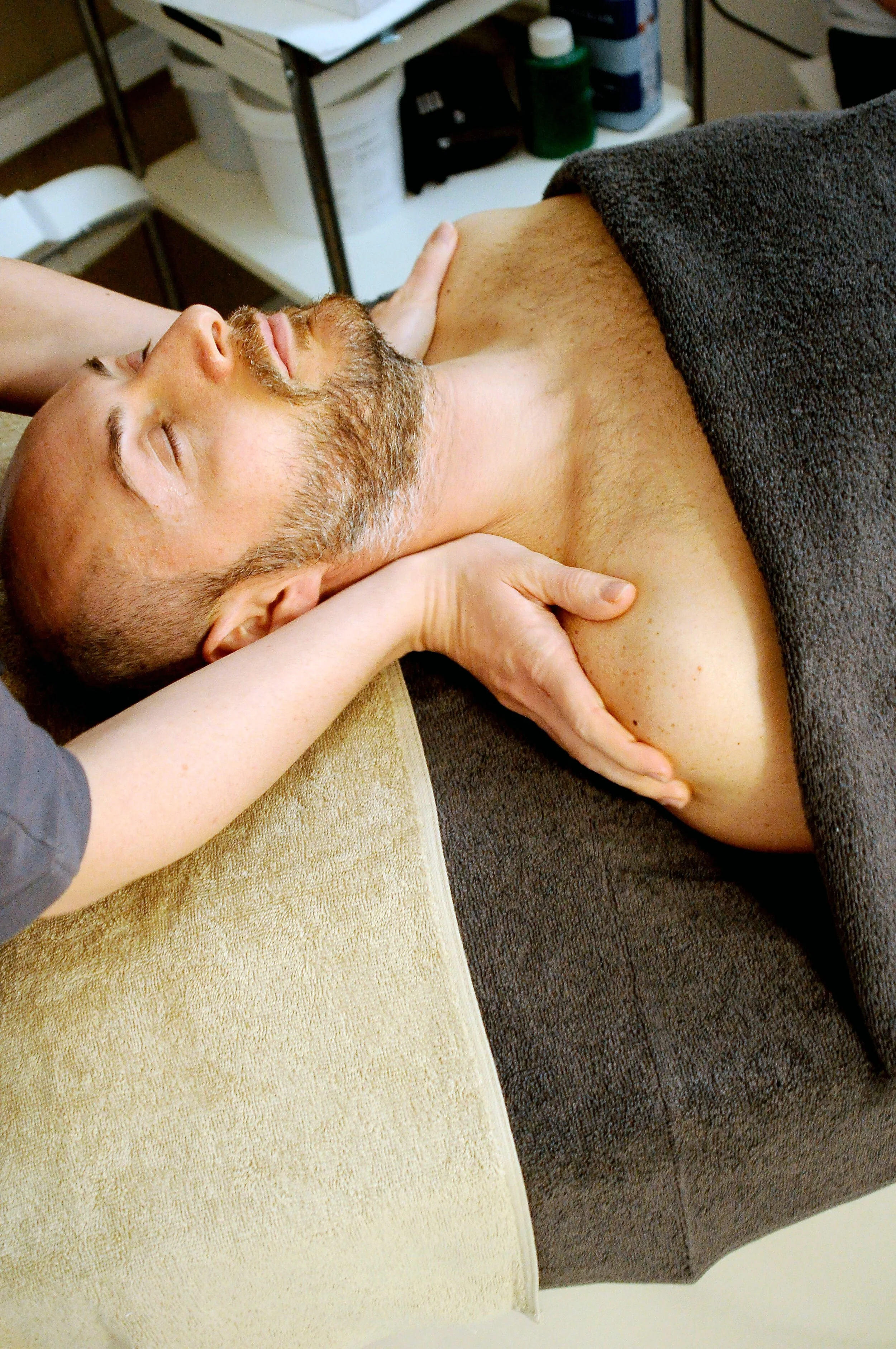Soothing the Scalenes
If you’re just joining this broadcast, I’ve spent the past couple weeks talking about the scalenes. This week I’m going to focus on things you can do to soothe your scalenes and keep your neck loose, flexible and pain-free.
(If you want to learn about what your scalenes are and do, you can check out the first post in this series; to learn about common injuries associated with your scalenes, you can check out the second post in this series; if you just want to see a picture of a young and handsome Tom Berenger, click here .)
One of my go-tos for treating neck pain and tight scalenes is positional release, or sclerotome release therapy. This isn’t super easy to explain, but the long and short is that I find tender points along your skeletal system and turn them off by repositioning your body into a position of ease. It’s kind of like magic, only without the eye of newt. Seriously though, it’s a relatively painless way of relieving tension and immediately improving mobility.
In addition to my work, other bodyworkers, specifically chiropractors and acupuncturists, can provide really beneficial treatments for scalene-related soreness and pain.
For those of you go-getters looking to loosen your scalenes at home — first, a quick word of warning: While your scalenes can be easily stretched, sometimes it takes a little convincing to get them to play along. Any and all stretching or manipulation in this area should be done slowly and with deliberate care.
A simple way to stretch and loosen your scalenes is to sit on a chair and lightly grip the edges of your seat with both hands. Press the top of your head towards the ceiling to extend your neck and spine upwards. Imagine that you’re trying to touch the ceiling with the top of your head. From here, you might already be feeling a stretch on either side of your neck - if so, just stay there, breathe and try to let things relax.
If you need more of a stretch, begin to turn your head slowly from side to side, keeping your eyes and chin level. Next, face forward and tilt your right ear to your right shoulder, keeping your nose pointed straight in front of you. You may notice that your head will try to rotate in a particular direction — often this happens because your body is trying to work around tight areas you’re not conscious of. Find these unruly spots and try to encourage a greater range of motion without causing pain. Obviously, do these stretches to your left side to balance things out!
Because of their close proximity to the SCM (sternocleidomastoid) muscle, scalenes will also benefit from stretching/self-massage here. Take your SCM between forefinger and thumb and slowly pinch and roll the muscle from sternum to jaw. Afterwards, stretch the SCM by tilting your chin towards the ceiling and rotating your head from side to side.
Lastly, as we talked about in the second post, your scalenes help lift your rib cage during forced breathing, which is a type of high chest breathing that is often associated with anxiety. If you’re feeling anxious, try to stretch and relax your neck as outlined above, but focus on taking long, deep breaths into your stomach as you do. Blow your belly out like a balloon being inflated, put on your favorite sensuous Kenny G track, and see if that helps your scalenes relax. (If it doesn’t, remember: it’s not Kenny G’s fault!)
As always, if you have questions or comments, leave them in the section below or follow me on Instagram. If you’ve found some stretches or breathing techniques that help you feel better, let me know — I love hearing success stories!



